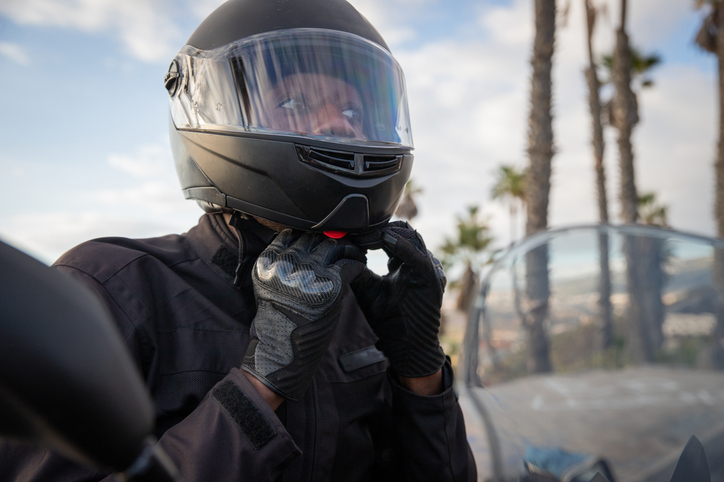California Motorcycle Laws
California has long been considered a haven for motorcycle riders. With movies and TV shows showcasing its iconic highways and breathtaking scenery, the allure of riding through the Golden State is undeniable. Whether it’s your primary or secondary mode of transportation, navigating California’s roads and highways on two wheels offers a unique sense of freedom and exhilaration. Before hitting the road, you need to know the following California motorcycle laws.
Motorcycle License
In 2022, the National Highway Traffic Safety Administration (NHTSA) reported that 35% of motorcyclist fatalities occurred while riders were operating without a valid motorcycle license.
In California, you must have a motorcycle license to ride. Having a standard driver’s license does not count as a motorcycle license. You must pass a motorcycle knowledge test and a motorcycle skills test. Completing a motorcycle training course may allow you to skip the skills test.
All riders under 21 must enroll in the CHP California Motorcyclist Safety Program (CMSP) and have a learner’s permit for at least six months before applying for an M1 or M2 license. While not mandatory, riders over 21 are encouraged to take a motorcycle safety course before applying for a license. California offers two distinct motorcycle licenses: Class M1 and Class M2.
A Class M1 license allows a rider to operate any two-wheel motorcycle, motor-driven cycle, or motorized scooter, as well as all vehicles categorized under Class M2.
A Class M2 license allows riders to operate any motorized bicycle, moped, or scooter.
Helmets
California has a universal helmet law mandating that all motorcycle riders and motorcycle passengers wear a U.S. Department of Transportation (DOT) compliant helmet when riding. The law also applies to motor-driven cycles and motorized bicycles.
A motorcycle safety helmet must have the DOT symbol on the back to be compliant. The symbol signifies that the helmet meets the Federal Motor Vehicle Safety Standard (FMVSS) No. 218.
When choosing a motorcycle helmet, look for a snug fit all the way around. It should have no obvious defects and must be securely fastened while you are riding. A full-face helmet offers the most protection.
Lane Splitting
Currently, California is the only state to legally allow lane splitting, which occurs when motorcyclists ride between two lanes of traffic. While there is no speed limit for lane splitting, the California Highway Patrol states that motorcyclists should not travel at 10 mph or faster than moving traffic. If you see a motorcyclist zipping past you on the freeway at a high speed, that is most likely illegal.
Lane splitting has been endorsed by most motorcycle organizations, but some argue that it puts motorcyclists in danger because they may not be seen by other drivers.
Motorcycle Insurance Requirements
Having car insurance does not automatically guarantee you coverage on a bike. Every motorcycle driver must carry separate motorcycle insurance to ride in California. While car insurance covers passengers, motorcycle insurance typically only covers a single rider.
California minimum-coverage standards include:
- $15,000 bodily injury liability coverage per person
- $30,000 bodily injury liability coverage per accident
- $5,000 property damage liability coverage
It is recommended that riders carry more than the minimum motorcycle insurance coverage, as injuries on motorcycles tend to be more serious than those in motor vehicles.
Motorcycle Riders FAQ
These are some common questions about riding motorcycles we get at our law firm:
How old do I have to be to ride a motorcycle in California?
To ride a motorcycle in California, you must be at least 15 and a half and obtain a learner’s permit. You cannot get your motorcycle license until you are 16. Consult the California Motorcycle Handbook for more detailed information regarding motorcycle laws and safety regulations.
Can I drive a motorcycle without a motorcycle license?
You cannot legally drive a motorcycle without the appropriate license. California Vehicle Code Section 12500 requires those operating a motorcycle or any motor-driven or motorized cycle to have a valid California motorcycle license.
What safety gear do I need?
In addition to a helmet, protective gear such as gloves, over-the-ankle boots, durable jackets, and long pants provides additional protection against injuries in the event of a motorcycle accident. Appropriate safety gear also protects riders from road rash, burns, and other forms of trauma.
Additionally, consider wearing high-visibility clothing to enhance visibility to other motorists, reducing the risk of a motorcycle accident.
What safety tips should I follow?
Motorcycles are much less visible on the road than vehicles, making them more at risk for accidents. However, that doesn’t mean motorcycle riding is unsafe. By following these safety tips, you can keep yourself and others safe:
- Follow all traffic laws and always obey the speed limit.
- Do not drive under the influence of alcohol or drugs.
- Avoid distractions.
- Wear high-visibility protective gear and DOT-compliant motorcycle helmets.
- Signal when turning or changing lanes. It’s the law.
Factors That Contribute to Motorcycle Accidents and Fatalities
In 2022, 6,218 motorcyclists were killed in motor vehicle crashes in 2022, representing 15% of all traffic fatalities. The fatality rate for motorcyclists is 22 times higher than for passenger vehicle occupants.
The three biggest factors contributing to fatal motorcycle crashes were:
- Speeding
- Alcohol impairment
- Helmet use
Of all motorcycle accidents reported in 2022, 35% of motorcyclists were speeding, and 42% were alcohol-impaired in single-vehicle crashes. Helmet use also plays a role in preventing serious head injuries leading to disability and death.
Contact Our California Motorcycle Accident Lawyers
During the month of May, you may notice an increase in awareness around motorcycle safety for riders and drivers. This is because May is Motorcycle Safety Awareness Month. During this time, the NHTSA, California Highway Patrol, and other local organizations will promote safe riding practices among California motorcycle drivers and other road users. Our personal injury law firm joins this awareness month and is here for injured motorcyclists.
If you or a loved one was injured in a motorcycle accident because of another driver, you may be eligible to receive compensation for your damages. The Law Offices of Daniel Kim can help you file a personal injury case against the negligent driver. Our motorcycle accident lawyers have represented countless motorcyclists and have successfully recovered compensation for their medical expenses and pain and suffering.
Contact our California law firm for a free consultation at (800) 719-9779.





